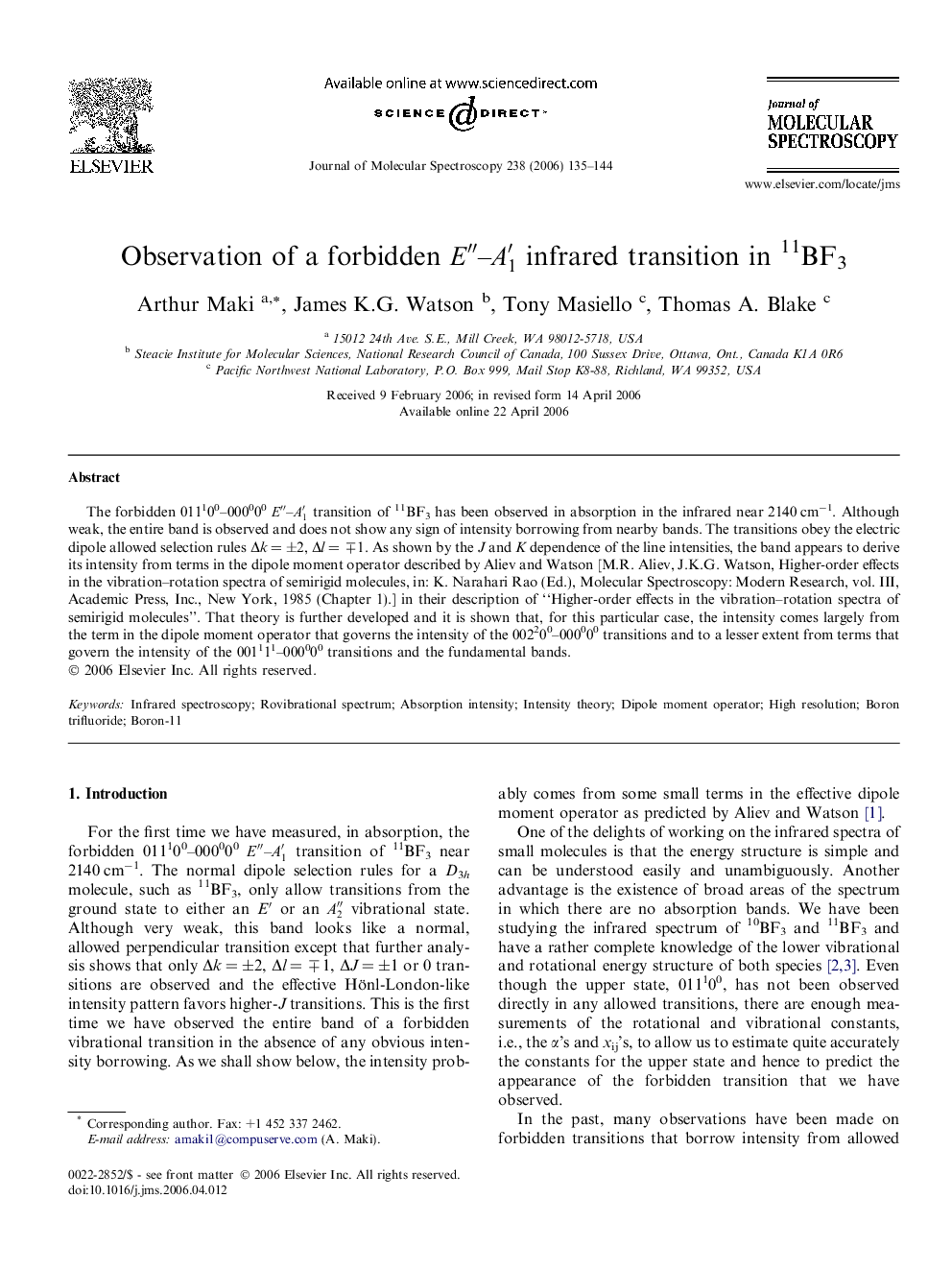| Article ID | Journal | Published Year | Pages | File Type |
|---|---|---|---|---|
| 5416095 | Journal of Molecular Spectroscopy | 2006 | 10 Pages |
Abstract
The forbidden 011100-000000Eâ³-A1â² transition of 11BF3 has been observed in absorption in the infrared near 2140 cmâ1. Although weak, the entire band is observed and does not show any sign of intensity borrowing from nearby bands. The transitions obey the electric dipole allowed selection rules Îk = ±2, Îl = â1. As shown by the J and K dependence of the line intensities, the band appears to derive its intensity from terms in the dipole moment operator described by Aliev and Watson [M.R. Aliev, J.K.G. Watson, Higher-order effects in the vibration-rotation spectra of semirigid molecules, in: K. Narahari Rao (Ed.), Molecular Spectroscopy: Modern Research, vol. III, Academic Press, Inc., New York, 1985 (Chapter 1).] in their description of “Higher-order effects in the vibration-rotation spectra of semirigid molecules”. That theory is further developed and it is shown that, for this particular case, the intensity comes largely from the term in the dipole moment operator that governs the intensity of the 002200-000000 transitions and to a lesser extent from terms that govern the intensity of the 001111-000000 transitions and the fundamental bands.
Keywords
Related Topics
Physical Sciences and Engineering
Chemistry
Physical and Theoretical Chemistry
Authors
Arthur Maki, James K.G. Watson, Tony Masiello, Thomas A. Blake,
